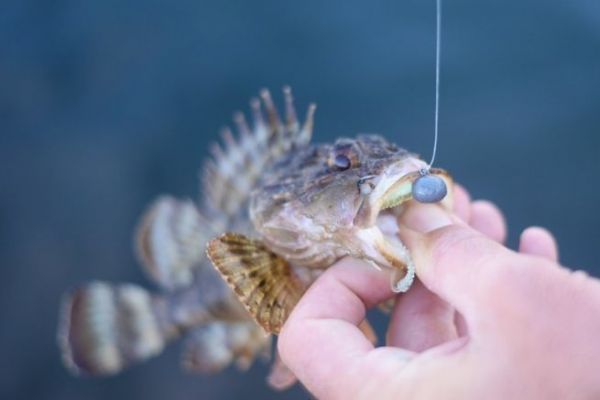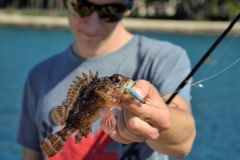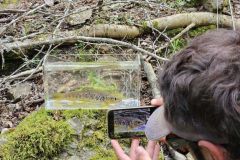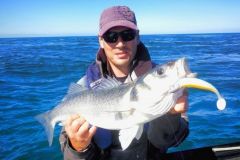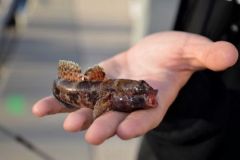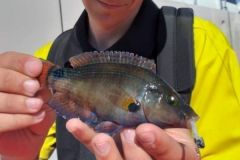Rockfishing, known as lightgame fishing in Japan, is an ultra-light seaside fishing technique. It can be used to catch a wide range of small marine predators. Rockfishing is intimately linked with light lure fishing techniques. Let's take a look at how to choose and adapt your jig head to best present your soft lure.
Round lead heads
Round or spherical lead heads (TP) are basic shapes. They are all-purpose and allow you to fish well with a wide range of soft lures and animations.
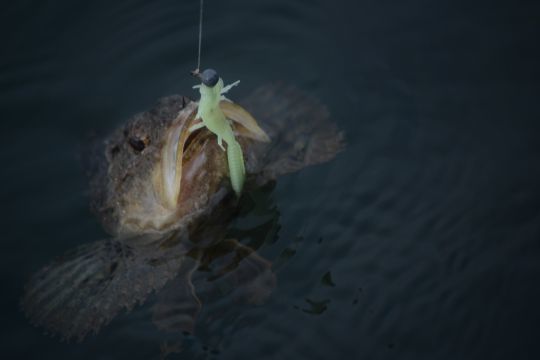
The round lead head excels when fishing close to the bottom along vertical structures or in holes. The spherical ballast is very "catchy" and takes the lure quickly to the bottom in an almost vertical descent.
This type of lure is ideal for fishing along docks or in cavities where rock fish hide during the day. All types of soft lure can be used: shad, finesse, worm, creature...
Lead heads with Texas hooks
Whether at sea or in freshwater, it's useful to use an anti-hook rig to get your lure through congested areas. From shore to sea, this is the case in areas where there is a lot of seaweed, or in harbours where there are many obstacles and ropes. Small or micro Texas hooks are preferable when targeting rock fish. Here again, almost all LS lures are suitable for this type of rig, although care should be taken to select lures with a thin or flat cross-section so as not to prevent the hook point from coming free when striking.
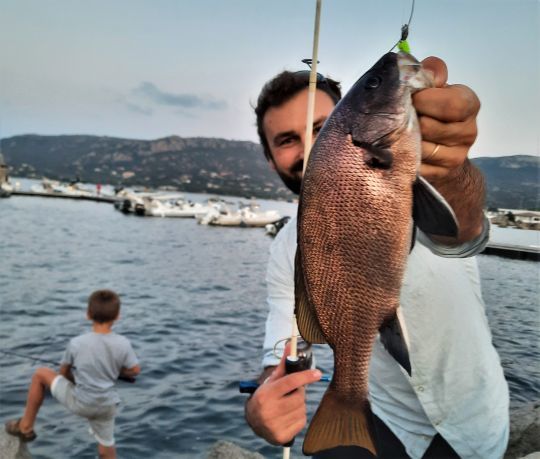
They are very useful for slow, scratchy fishing, especially at night, when rockfish have emerged from their caches and are searching for food on the substrate.
You can also use a light version of the classic Texan rig with a sliding ball and a small Texan hook.
Pointed lead heads
Pointed lead heads are streamlined and hydrodynamic. They are more suited to open-water fishing with swimming lures such as shad or finesse. They offer a swirling, random swimming action with less drag than a round head.
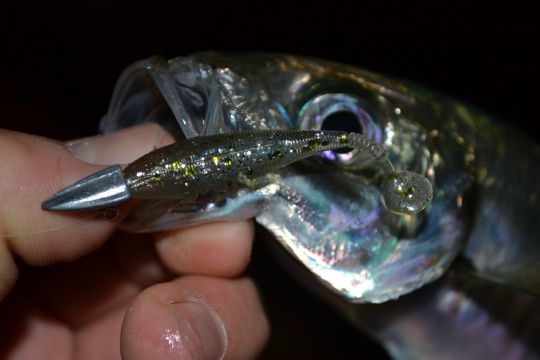
They are ideal for fishing for small pelagic predators such as wolffish, horse mackerel and oblades.
Lead or tungsten?
There are several types of ballast to weight a lead head. Lead is an inexpensive classic that is highly effective for fishing.
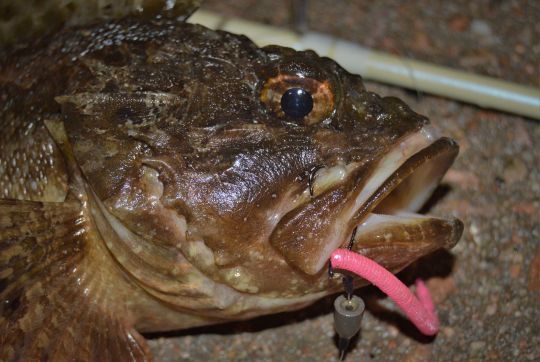
Tungsten has the advantage of being denser than lead. With the same volume, the whole will be more compact and swimmable than with a lead ballast. It's also harder and therefore more resonant. This is very useful when you want to know the nature of the substrate. On the other hand, it's more expensive than lead, so unless you're fishing technically and delicately, I recommend using lead for rockfishing.
What size hook?
This will depend on the species you are targeting. Sars and all sparids have small mouths which require small hooks (N°10 to N°6). However, they must be iron-strong to preserve their bite and not twist or deform over time, as sparids have a hard, powerful jaw. A long shank favours success on the hook. Sparids have an annoying tendency to bite the back of the lure, just after the hook, if it's too short.
For small rock fish such as blennies, wrasse, gobies or small wrasse, it's also useful to have small, strong iron hooks.

For scorpion fish and snapper, bass or horse mackerel, you can increase the hook size and go for n°6 to 2. This is important to adapt the size of the soft lures to be offered, which are more substantial.
In terms of weight, depending on the area to be fished, we generally use weights from 2 to 7 grams, corresponding to the power range of most UL rods designed for rockfishing.
